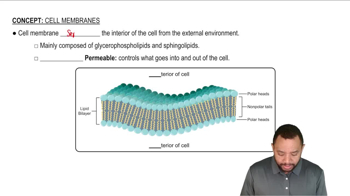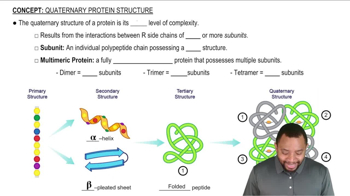Indicate whether each of the following molecules is an α-amino acid or not, and explain why.
a.
 Verified step by step guidance
Verified step by step guidance Verified video answer for a similar problem:
Verified video answer for a similar problem:



 3:4m
3:4mMaster Intro to Amino Acids Concept 1 with a bite sized video explanation from Jules
Start learning